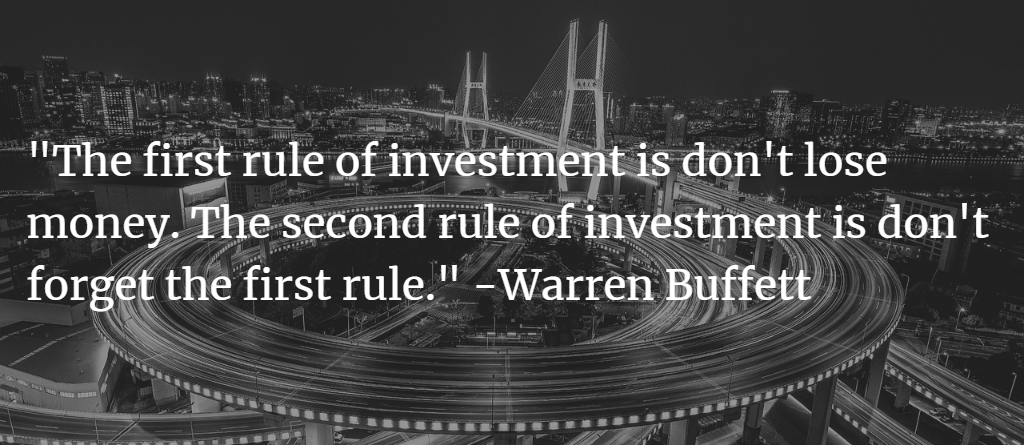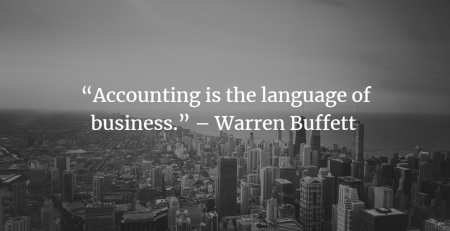Chinese VIE Structure: Wall Street Continues to Ignore the Risks
Buried in the news coverage of the election last week was a story that China suspended the $34 billion IPO of Ant Group, the largest online payments platform in China which grew up inside Alibaba, just two days before its planned listing.
If there wasn’t a huge amount of election noise going on right now, this would likely be the biggest story in finance – possibly signaling China’s growing concern about the amount of power and independence large private technology firms have amassed in the country, and their willingness to upend things with little notice.
But this is just the most recent iteration of a longstanding problem with investing in China, a problem most people are worryingly unaware of. We at Globescan hold no positions in any Chinese company, nor will we unless both the ownership structure and the regulatory environment in the country change significantly. Yes, there are some wonderful companies in China – but we struggle to discount two substantial issues when it comes to investing in the country:
- Integrity of Accounting: Chinese companies are not subjected to anything like the same level of regulatory oversight as US or European listed businesses. You only have to look as far as very high profile frauds such as Luckin’ Coffee, the ‘Starbucks of China’; that turned out to be built entirely on fabricated numbers – wiping out billions of investor’s dollars in the process. There are countless others. Sadly, we just cannot have confidence in the numbers we are presented with when it comes to Chinese companies.
- The Variable Interest Entity (VIE) Structure: Almost every listed Chinese company we can buy outside of China is listed through a VIE structure. Through this structure investors (usually unwittingly) don’t actually own any part of the actual underlying Chinese company. While that might sound ridiculous, sadly its true. Investors who buy shares in Chinese stocks such as JD.com, Alibaba, Tencent, etc., do not technically have any ownership of the underlying business whatsoever.
It is that second point that is the one we would like to discuss today, as many Western investors simply have no clue what they are actually buying when they invest in Chinese stocks. They think when they buy JD.com or Alibaba stock that they own a percentage of the company, as they do in any US or European listed company – they don’t.
The reason is that under Chinese law, foreign ownership in certain (most) Chinese industries is prohibited. As a result, it is illegal for Chinese companies like JD.com and Alibaba to have any non-Chinese shareholders. Back in the early 2000s, as the China growth engine was really beginning, Chinese companies growing quickly looked longingly at the huge amounts of capital available in the US and wanted to access it. At the same time, US investors and Wall Street firms looked longingly at the huge growth rates in China and wanted to access that. But Chinese law prevented them both from doing so.
So, a structure was developed to circumvent Chinese law: the VIE (Variable Interest Entity). This is a structure that has been around for decades, first popularized here in the US by Enron to obfuscate assets and liabilities on its balance sheet (there is the first alarm bell…).
The VIE structure achieves the dual purpose of giving Chinese companies access to Western capital, whilst simultaneously allowing Western investors access to Chinese stocks. It does so by effectively saying two different things to each side: the VIE says to the Chinese regulator that the company in question is wholly owned by Chinese nationals, while the same VIE simultaneously tells the Western shareholders that they legitimately own that Chinese company.
We will use Tencent as an example to explain the basic structure of a VIE. Tencent operates in a sector on the ‘restricted list’ issued by the government. This list outlines which sectors are prohibited from having any foreign ownership. It is a very broad list, with general wording such that in reality the majority of Chinese companies are barred from any outside ownership.
So as a result, Tencent cannot sell its shares to any non-Chinese investors. But it can circumvent this law using that VIE structure. Without getting into complex legalities, the VIE works as follows; Tencent creates a Cayman Islands listed shell company (no real business, no office, no employees), which it also calls Tencent. (For simplicity from here onwards we will refer to the actual Tencent as ‘Real Tencent’, and the Caymans shell company as ‘Fake Tencent’) Once Fake Tencent has been setup, Real Tencent then creates a complex web of legal agreements that serve to give Fake Tencent a claim on the profits and control of the assets that belong to Real Tencent.
(Note that there is no recognition of any actual ownership, just a claim on the profits and indication of an element of control)
Fake Tencent now owns as its only asset these contracts and agreements. Fake Tencent then lists itself as a company on the NYSE, selling shares to investors under the name ‘Tencent’. Wall Street banks take in millions of dollars in fees to list Fake Tencent, and hundreds of investment firms and investors invest billions of dollars into buying shares of Fake Tencent. Bear in mind, the whole time the Western investors are buying stock in a company called ‘Tencent’ that appears to simply be the Chinese company. Fake Tencent appears to have control over the assets and a right to the profits of the real Tencent in China, even though in reality it is just a shell company with no real assets or business.
This structure has been repeated over and over for hundreds of Chinese companies, such that there are now vast numbers of VIEs listed on NYSE and NASDAQ, with the total amount invested well into the trillions of dollars.
What are the problems with this structure?
There are two main issues:
-
The VIE structure is illegal under Chinese law
The first issue is that these structures themselves are fundamentally illegal. The contracts pertaining to control of the assets and the rights to the profits are legally unenforceable. The reason is that any right of the VIE to profits of the Chinese company rest on the contracts it has with the real Chinese company. But as that contract was signed for the express purpose of allowing foreign investment (which is illegal), the contract itself is void and unenforceable.
The idea that a contract that is constructed to circumvent a law is not enforceable is a common law concept. Whilst China follows civil not common law, Chinese law does contain a very specific statute that covers this issue, and states that any contract that intends to avoid a law is not enforceable. So, any contract that seeks to give de facto foreign shareholder ownership is worthless. Fake Tencent, the Caymans shell company, only has any value because of the contracts that they hold which in turn are not legal and unenforceable.
Some VIE structures even include a call option, giving VIE shareholders the right to convert into real stock of the domestic Chinese company at some point in the future. These option contracts are laughable in their very existence. No foreign investor can legally be a shareholder in a domestic Chinese company, so the option contracts themselves can never be exercised, making them entirely worthless as things stand today.
Yet despite the very black and white illegality of the VIE structure, for the most part, the Chinese turn a blind eye to it. Hundreds of VIEs exist and some have done so for a decade or more.
The problem is that occasionally and without warning, China does in fact decide to enforce its laws. In recent years there are many examples of the Chinese publicly acknowledging that the VIE structures are fundamentally illegal and the VIE shareholders (if the VIE already listed) get left with either nothing, or pennies on the dollar. In a number of high-profile court cases (Mingsheng bank, Gigamedia, etc) VIE shareholders have tried to enforce the contracts in Chinese law and failed. There are other examples where VIEs have been prevented from even listing in the first place, with the regulator preventing the IPO based purely on the illegality of the structure.
We have no way of knowing which company the Chinese government will pick on next to use an example or to randomly enforce a law that hundreds of others continue to break.
At its most extreme, China is completely within its legal right to declare all these VIEs illegal and therefore worthless, which would wipe out trillions of dollars from international shareholders invested in these VIE companies. This is effectively a nuclear option – the geopolitical ramifications of such a move would be enormous, and likely so large as to be a legitimate deterrent for the time being. But it remains a real possibility, one that is usually either unknown or ignored by investors in these companies.
-
Shareholders don’t have ownership of the real Chinese company’s assets, so assets can be taken away without warning or compensation.
With the news of Ant Group’s failed IPO, it is worth remembering the history of the company, which used to be called Alipay, as a perfect example of the second main risk of VIEs: that what you think you own can be taken from you at any time.
Brief history lesson: Alipay/Ant Group grew up within Alibaba and became China’s largest payments processing company (think Mastercard, Visa, Paypal, and Stripe all in one). It was for many years one of the most valuable parts of Alibaba. Then, only a few short years ago in 2011, Alipay was stolen from the US and European investors in Alibaba’s VIE structure when the founder and CEO Jack Ma unilaterally transferred 100% ownership of Alipay into a different company controlled solely by himself.
One of the shareholders hurt was Yahoo who were a big early investor in the Alibaba VIE, amassing a 43% stake. Yet, despite that very substantial ownership, Yahoo did not even find out about the transaction until months later. When they discovered what had happened, they were of course outraged and launched into legal proceedings.
However due to the VIE structure, Yahoo (and other shareholders alongside them) were powerless to do anything. They had no legal recourse. Yahoo owned 43% of the Alibaba VIE (Fake Alibaba), so it did not technically own any portion of Alipay at all. What Yahoo legally owned was 43% of a shell corporation listed in the Cayman Islands that had some (unfortunately illegal) contracts with Alibaba. And when it came time to enforce those contracts. they were unsurprisingly unenforceable. Let us be very clear about exactly what happened: Jack Ma took a company worth billions of dollars directly from under the nose of thousands of US and European investors in the VIE, and there was nothing anyone could do about it.
Yahoo were eventually given a pitiful settlement by Mr. Ma, he offered the VIE shareholders up to $6 billion when Alipay eventually IPO’d, a sum that undervalued the asset by multiples (the recent valuation was in excess of $300bn). Naturally, Yahoo shareholders were furious, and the CEO of Yahoo was fired shortly afterwards.
Yet, despite this recent, brazen, and high-profile theft, along with many others like it, thousands of investors continue to invest in the Alibaba VIE to this day (currently valued at over $770bn). This is even though there is absolutely nothing preventing the same happening again. Or indeed the same at any other VIE. Thousands of Western investors continue to eagerly invest billions in the very structure that has been proved to offer them no protection in the past. Do people never learn?!
So why are trillions of dollars invested in these VIE’s despite the risks?
That is a great question. There are several reasons:
- Passive Investing: The biggest asset managers controlling the most assets in the world are passive. Passive investors by their very nature know (almost) nothing about what it is they invest in. If it is a listed stock and in the index they’re tracking, they buy it. It is as simple as that. The largest passive fund houses own hundreds of billions worth of VIEs. This passive approach provides a steady buyer for these “fake” companies.
- The Regulators have failed to protect the integrity of markets, and the end investor: Frankly we do not think that the SEC (US), the FCA (UK) and ESMA (Europe) have done what they should do when it comes to VIEs and regulating them. There is little to nothing made of the fact that shareholders in these VIEs own no real assets and have no legal recourse should the Chinese decide to void the whole situation, or the Chinese parent company decide to move assets elsewhere (as with Alipay). We’ve seen very little from the regulators to protect investors outside of some feeble attempts by the SEC to effectively cover their own legal liability – by ensuring a risk comment is disclosed in VIE annual reports, rather than actually preventing or banning the listings altogether until a structure that provides genuine legal protection and shareholder rights can be worked out.
- Accounting rules have exacerbated the problem: Investors are also let down the by global accounting standards of both US GAAP and the IFRS. Current accounting standards make shares in the VIEs appear to investors as if they are in fact ownership of the Chinese company. Under both US GAAP and IFRS, VIEs are allowed to consolidate the financial statements of their domestic counterpart into their own reporting. So, when any prospective investor looks up Alibaba stock (which is of course the VIE), they see the balance sheet and income statement of the Real Alibaba, despite the fact that what they’re actually buying is a Cayman’s shell company with no real assets and no legal claim to the assets or income streams of the Real Alibaba. We believe that presenting the information in this way is hugely misleading.
Conclusion
Most of the Western investment community does not even talk about the VIE structure – they either don’t know about it, don’t understand how it works, or don’t care to learn.
When it comes to the very real risk that all VIEs listed are technically worthless, there remains a legitimate argument that China would not be so destructive as to enforce its own laws, as that would wipe trillions of dollars off the US stock market in an instant. And for the time being, that argument holds weight. But nevertheless, it remains a real risk that should be discounted by investors. And whilst a blanket ban may be unlikely, the risk of continued targeting of specific individual companies remains very significant.
As background here, for the last ten years or so there have been changes discussed to the Chinese foreign investment laws (FIL) that restrict non-Chinese ownership. Draft legislation that first appeared in 2011 was put into law in 2020, and many were hoping it would provide some clarity on the issue of VIEs. As is often the way with Chinese laws, it was entirely vague. It provided no additional protection, and no additional evidence that the government would look to crack down on VIEs any time soon. The legal uncertainty remains, with China continuing to turn a blind eye.
So, while investors may well avoid the gaze of the Chinese government and regulators for now, there is no guarantee of that continuing. As such, the main thing we want you take away from this article is that investors should always understand what they own – that is quite simply the best risk control measure that exists. Any investor in a VIE needs to understand that technically they own nothing, but a number of illegal and unenforceable contracts held by a Cayman Islands listed shell company that happens to share the name of a real Chinese company.
For us, we want the protection of owning real assets, and the support that comes with a robust regulatory backdrop and enforceable legal protection. There is no shortage of wonderful companies for us to invest in here in the United States – there is simply no need to walk into the enormous risk that investors take when purchasing VIEs until things change with the structure.
(Note – we published an update to this article here)
Disclosures: This website is for informational purposes only and does not constitute an offer to provide advisory or other services by Globescan in any jurisdiction in which such offer would be unlawful under the securities laws of such jurisdiction. The information contained on this website should not be construed as financial or investment advice on any subject matter and statements contained herein are the opinions of Globescan and are not to be construed as guarantees, warranties or predictions of future events, portfolio allocations, portfolio results, investment returns, or other outcomes. Viewers of this website should not assume that all recommendations will be profitable, or that future investment and/or portfolio performance will be profitable or favorable. Globescan expressly disclaims all liability in respect to actions taken based on any or all of the information on this website.
There are links to third-party websites on the internet contained in this website. We provide these links because we believe these websites contain information that might be useful, interesting and or helpful to your professional activities. Globescan has no affiliation or agreement with any linked website. The fact that we provide links to these websites does not mean that we endorse the owner or operator of the respective website or any products or services offered through these sites. We cannot and do not review or endorse or approve the information in these websites, nor does Globescan warrant that a linked site will be free of computer viruses or other harmful code that can impact your computer or other web-access device. The linked sites are not under the control of Globescan, and we are not responsible for the contents of any linked site or any link contained in a linked site. By using this web site to search for or link to another site, you agree and understand that such use is at your own risk.






